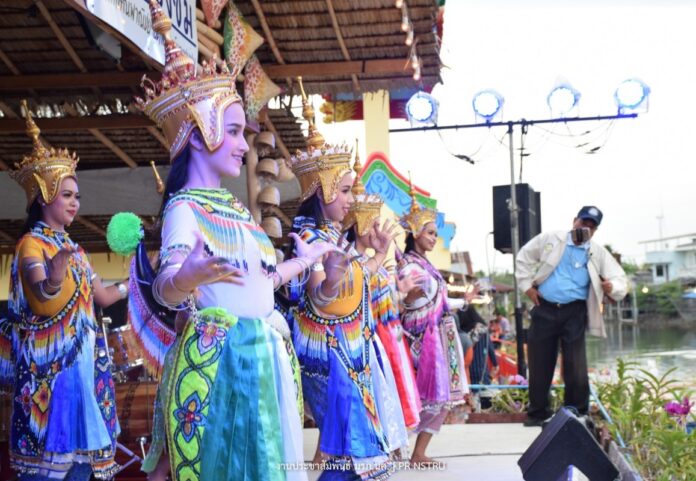
BANGKOK — Nora dance, a southern traditional Thai dance with their signature long and curly metal fingernail tips, was listed by UNESCO among this year’s intangible heritages on Wednesday. Nora dance became the third UNESCO-listed Thai intangible heritage following Khon dance in 2018 and traditional Thai massage in 2019.
“Nora is a lively and acrobatic form of dance theatre and improvisational singing from southern Thailand. Performances normally include a long oral invocation, followed by a presentation by a lead character who dances with vigorous and elaborate movements of the legs, arms and fingers. The performances are usually based on stories about the former lives of Buddha or about legendary heroes,” UNESCO wrote in its description of Nora dance accompanying the announcement.
“An ensemble plays highly rhythmic and fast-paced music, with a traditional southern oboe providing the melody and strong rhythms produced by drums, gongs, cymbals and wooden clappers. The main Nora performers – whether male or female – wear colourful costumes with crowns or headdresses, beads, bird-like wings tied around the waist, ornate scarves, and swan tails that give them a bird-like appearance. Performers also wear long, metallic fingernails that curl out from the fingertips… Performances use regional dialects, music and literature to reinforce cultural life and social bonds among local people. Over the five hundred years old, Nora is performed in local community centres and at temple fairs and cultural events…”
Other countries in Southeast Asia having intangible heritage listed this year includes Xoe dance of the Tai people in Vietnam, Indonesia’s gamelan and Songket woven fabric in Malaysia.














































